
Do you have a question about the Lennox ML18XC2 Series and is the answer not in the manual?
| Type | Heat Pump |
|---|---|
| SEER Rating | Up to 18 |
| Refrigerant | R-410A |
| Stages | 1 |
| Model | ML18XC2 |
| Compressor Type | Single Stage |
Specifies torque values for fasteners on HVAC components during service or repair.
Guidance on selecting and using a manifold gauge set for HFC-410A refrigerant systems.
Explains the function and use of liquid and vapor line service valves for various maintenance tasks.
Procedure for operating angle type service valves, including back-seating and front-seating.
Instructions for operating ball type service valves, including opening and closing procedures.
Steps to access and connect a gauge set to the service port, and replace the service port cap.
Procedure for reinstalling the stem cap to protect the valve stem and ensure proper sealing.
Factors to consider for optimal unit positioning, including sound ordinances and proximity to windows.
Guidelines for placing the unit on a slab, ensuring proper drainage and slope tolerance.
Instructions for mounting the unit on a roof, including clearance and wind barrier considerations.
Details on field refrigerant piping, including liquid and suction lines and recommended Lennox line sets.
Importance of isolating refrigerant lines from building structures to prevent vibration and noise transmission.
Requirements for matching the ML18XC2 with indoor coils, especially those with RFC1 metering lines.
Illustrates proper isolation techniques for transitioning refrigerant lines from vertical to horizontal runs.
Provides examples of proper refrigerant line set isolation for vertical runs, including insulation guidelines.
Illustrates methods for isolating and securing horizontal refrigerant line sets from floor joists or roof rafters.
Steps for preparing refrigerant line ends by cutting square and deburring without crimping.
Procedure for removing service caps and cores from suction/vapor and liquid line service ports.
Instructions for connecting a manifold gauge set for brazing, including nitrogen flow setup.
Protecting service valve seals and bodies with water-saturated cloths during brazing.
Procedure for flowing nitrogen through the system via the service valve stem port.
Method for brazing the line set to service valves using water-saturated cloths for cooling.
Final steps after brazing, including disconnecting gauges and cooling piping.
Steps for removing a fixed orifice metering device from an uncased indoor coil.
Procedure for removing an expansion valve from an uncased indoor coil.
Connecting gauges and equipment for the system flushing procedure.
Procedure for flushing the line set and indoor unit coil using clean refrigerant.
Detailed steps for installing the indoor expansion valve, including connections and torque.
Instructions for proper orientation and mounting of the sensing bulb for the expansion valve.
Procedure for installing the equalizer line connection to the expansion valve and vapor line.
Connecting the HFC-410A manifold gauge set for the leak testing procedure.
Procedure for testing the line set and indoor unit for leaks using nitrogen and a leak detector.
Connecting the gauge set, micron gauge, and vacuum pump for system evacuation.
Steps for evacuating the line set and indoor coil to the required vacuum level.
Information on using the transformer provided with the furnace or air handler for low-voltage control power.
Guidelines for installing the thermostat on an indoor wall for optimal performance.
Overview of key components within the outdoor unit and their functions.
Information on the filter drier, its purpose, and replacement requirements for HFC-410A systems.
Description of the auto-reset low pressure switch, its location, and operating pressure settings.
Details on the auto-reset high pressure switch, its location, and trip pressure settings.
Explanation of the crankcase heater and its controlling thermostat switch for compressor protection.
Information on the compressor-mounted thermal protection switch that prevents overheating.
Instructions for locating, checking, cleaning, or replacing the indoor unit's air filter monthly.
Guidance on replacing disposable air filters with one of the same type and size.
Instructions for cleaning reusable foam filters using mild soap and water solution.
Information on systems equipped with electronic air cleaners and seeking dealer maintenance instructions.
Information on the indoor unit's evaporator coil drain pan for condensate collection and checking drain lines.
Refer to the thermostat homeowner manual for instructions on operating the thermostat.
Checklist of items to verify before calling for service, including thermostat settings and disconnect switches.





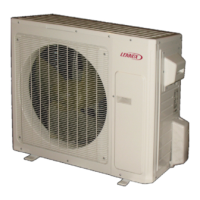


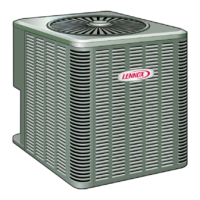
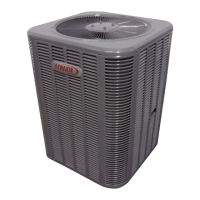
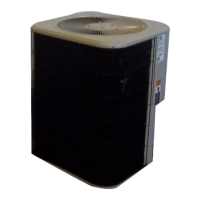
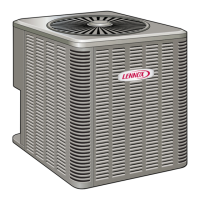
